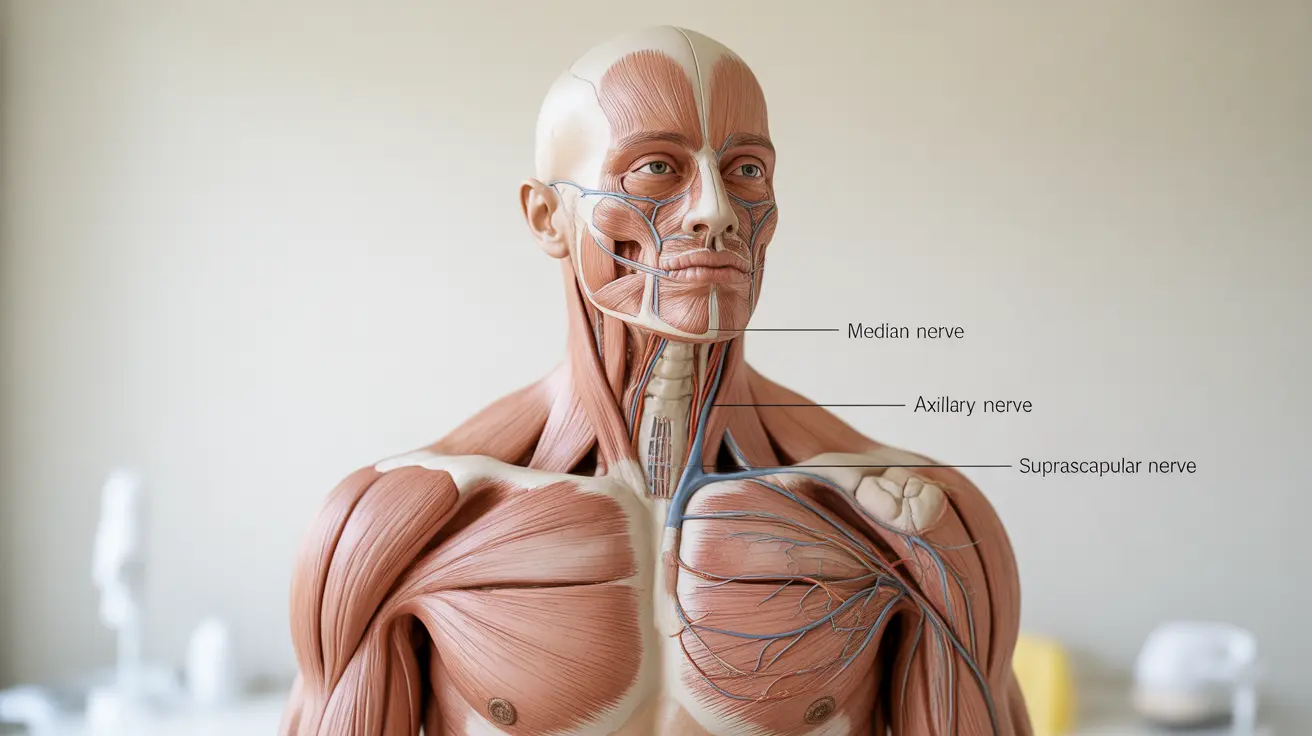Shoulder numbness can be an unsettling and sometimes concerning sensation that affects many people. This condition, characterized by a loss of feeling or tingling in the shoulder area, can significantly impact daily activities and quality of life. Understanding its causes, recognizing associated symptoms, and knowing when to seek medical attention are crucial steps in managing this condition effectively.
While shoulder numbness may sometimes resolve on its own, it can also indicate underlying medical conditions that require professional attention. This comprehensive guide will explore the various aspects of shoulder numbness, from its common causes to treatment options and preventive measures.
Common Causes of Shoulder Numbness
Shoulder numbness typically occurs due to pressure or damage to the nerves that supply sensation to the shoulder region. Several conditions can lead to this symptom:
Nerve Compression
The most frequent cause of shoulder numbness is nerve compression, which can occur due to:
- Cervical radiculopathy (pinched nerve in the neck)
- Thoracic outlet syndrome
- Poor posture
- Sleeping position
Medical Conditions
Various medical conditions can trigger shoulder numbness:
- Multiple sclerosis
- Diabetes
- Peripheral neuropathy
- Herniated disc
- Brachial plexus injuries
Recognizing Associated Symptoms
Shoulder numbness rarely occurs in isolation. Common accompanying symptoms include:
- Tingling or pins-and-needles sensation
- Weakness in the affected arm
- Burning pain
- Reduced range of motion
- Muscle spasms
Diagnostic Process
Healthcare providers use various methods to diagnose the cause of shoulder numbness:
Physical Examination
During the initial evaluation, doctors typically:
- Test muscle strength and reflexes
- Assess range of motion
- Check for areas of tenderness
- Evaluate posture and alignment
Imaging and Tests
Common diagnostic tools include:
- MRI scans
- X-rays
- Electromyography (EMG)
- Nerve conduction studies
Treatment Approaches
Treatment options vary depending on the underlying cause and severity of symptoms:
Conservative Treatment
Initial treatment often includes:
- Physical therapy exercises
- Posture correction
- Anti-inflammatory medications
- Rest and activity modification
Advanced Treatment Options
For more severe cases, doctors might recommend:
- Corticosteroid injections
- Surgery for nerve decompression
- Specialized physical therapy programs
- Alternative therapies like acupuncture
Physical Therapy and Exercise
Physical therapy plays a crucial role in managing shoulder numbness:
Beneficial Exercises
Common therapeutic exercises include:
- Shoulder blade squeezes
- Neck stretches
- Range-of-motion exercises
- Strengthening exercises for supporting muscles
Frequently Asked Questions
What are the common causes of shoulder numbness and how can I tell if I have a pinched nerve? Common causes include nerve compression, poor posture, and underlying medical conditions. Signs of a pinched nerve include radiating pain, tingling, and weakness along the affected nerve pathway.
What symptoms usually accompany shoulder numbness and when should I see a doctor? Accompanying symptoms often include tingling, weakness, pain, and reduced range of motion. See a doctor if symptoms persist beyond a few days, worsen over time, or are accompanied by severe pain or loss of function.
How is shoulder numbness diagnosed through physical exams and imaging tests? Diagnosis typically involves a physical examination testing strength, reflexes, and range of motion, followed by imaging tests like MRI or X-rays when necessary. Nerve conduction studies may also be performed.
What treatments are effective for relieving shoulder numbness caused by nerve compression? Effective treatments include physical therapy, anti-inflammatory medications, posture correction, and in some cases, corticosteroid injections or surgery, depending on the severity and cause.
Can physical therapy help with shoulder numbness and what exercises are recommended? Yes, physical therapy can be highly effective. Recommended exercises include shoulder blade squeezes, neck stretches, and specific strengthening exercises targeting the affected area. A physical therapist can develop a personalized exercise program based on your condition.




